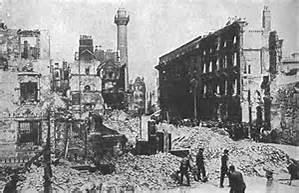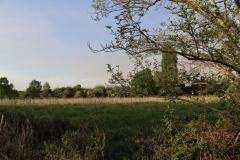
In a year of great battles (Verdun, Jutland, Somme) when many of the problems that beset us today began to emerge, the community lost its first fatality of 1916 - Private Arthur Jackson (4546) on the 30th of the month.
Arthur was born in Styal village in 1878, the third child of George and Hannah living first at Farm Fold then later in Norcliffe Gardens. He followed his father working as a domestic gardener at Norcliffe Hall and later for barrister Thomas Eastwood of Highfield. By 1911 only he and his sister Matilda remained in the area living at Holts Lane.
Attesting under the voluntary Derby scheme, he was called to the 5th/6th battalion Cheshires in March 1916. His military career proved agonisingly short. Five weeks later he died aged 37 of pneumonia at Prees Heath Camp, Shropshire. Arthur was buried in St Bartholomew's churchyard in the same grave as his parents and is commemorated on the Styal Memorial along with 24 others.
Meanwhile, away from the Western Front the Turks, encouraged by their victory at Gallipoli proceeded to attack the Suez Canal and the Caucasus. Both attempts were repulsed. However the Turks did achieve another triumph on 29th April at Kut al Amara in Mesopotamia (now Iraq). In 1915 an Anglo-Indian force, led by Major General Charles Townshend, had advanced up the Tigris in an attempt to secure oil supplies and reach Baghdad. Over-extended, they did not reach their target and withdrew 20 miles to Kut.
They were besieged there for 147 days in hot, fetid conditions and finally surrendered despite 4 attempts to relieve them (including one involving the 8th Cheshires) and the first aircraft drop of supplies in history. It was a humiliating experience; 13,300 were captured (2,900 British, 10,400 Indians). Ordinary soldiers were force-marched 1,200 miles north to a PoW camp in Alesso. More than a third died (70% of the British and 50% of the Indians). The officers, however, were escorted north by boat and the architect of "the most abject capitulation in British history until then" lived a pampered life in a large house in Constantinople for the rest of the war.
Closer to home, a significant drama was unfolding in Ireland, resulting in the Easter Rising. The Third Home Rule Bill introduced by Asquith in 1912 had produced a crisis which nearly resulted in civil war. The Irish Unionists led by Sir Edward Casson armed themselves to oppose impending Catholic domination. The Irish Republican Brotherhood created an opposing force. Everything was put on hold by the advent of the Great War, which overshadowed everything - indeed over 200,000 Irish including many Catholics fought and 49,400 overall ultimately died. However, the growing likelihood of enforced conscription radicalised many and produced a backlash.
On 24th April about 2,000 extreme Republicans seized the GPO and other key buildings in Dublin and elsewhere. The six day rebellion led by Connolly and Pearce was crushed by about 8,000 British soldiers. The army lost 116, the rebels 64, but many civilians were killed (132) or wounded (2,200) in the crossfire. Fifteen leaders were executed after secret and speedy trials. (Eamon de Valera, a US citizen, was spared.) These events converted many of the ambivalent citizens to the cause of independence and were to resonate for decades afterwards.
Elsewhere this month former Tory MP, Sir Mark Sykes met with French diplomat, Francois Georges Picot (later joined by Russian foreign minister, Sergei Sazonov) to secretly plan the carving up of the Ottoman Empire in the event of an Allied victory. Just another of the awful legacies left by the events of the fateful year 1916.
Photo: Easter Rising, Dublin, April 1916.
Guest post by Jon Armstrong and Alan Cooper, Wilmslow Historical Society.









